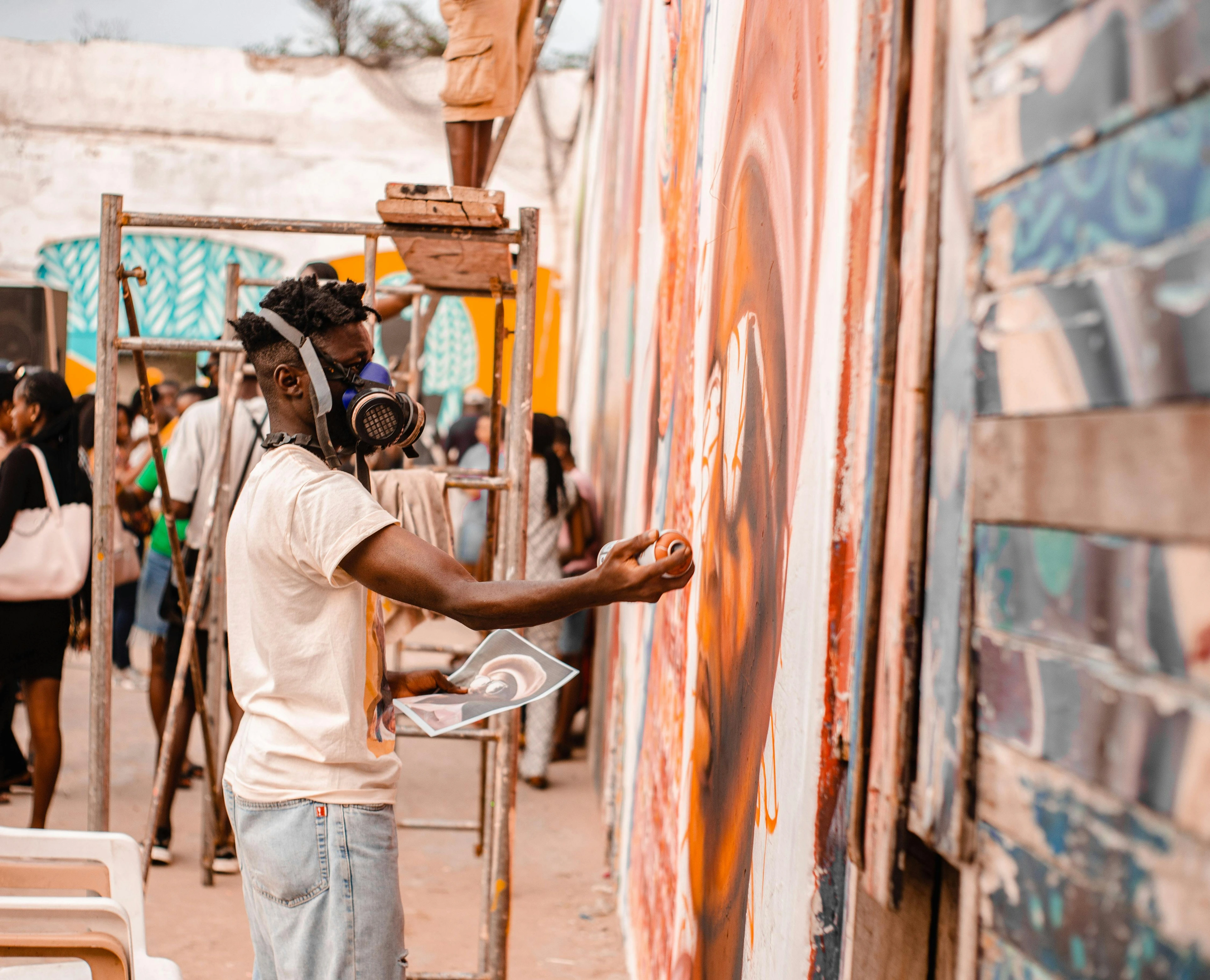
What is a Mural? History, Techniques, & Enduring Impact of Wall Art
From ancient caves to dynamic street art, explore murals' global history, diverse techniques, profound societal impact, and crucial ethical considerations that shape our urban world.
What is a Mural? A Deep Dive into Wall Art, Its Global History, Enduring Impact, and My Artistic Path
I've always been fascinated by walls. Not just as structural necessities, mind you, but as canvases, as storytellers. There's a unique thrill in encountering an explosion of color and narrative splashed across an otherwise ordinary facade – that's a mural. A mural, at its heart, is an artwork integrated directly into an architectural surface – think walls, ceilings, or even floors. It's inherently site-specific, meaning it's created for and tied to its location, rather than being a portable piece. It's not just a painting on a wall; it's a statement, a whispered secret, a shout across time, and, for me, often a mischievous wink, defying expectations and the drab. They've always felt like the soul of a city, or sometimes, the beating heart of a home.
More than just decoration, murals have consistently served deeper purposes: communication, social commentary, and transforming our shared environments. But what exactly defines a mural, why have we, as humans, kept this tradition alive from prehistoric times to now, and how has its immense scale influenced its message? Let's journey back to when walls first spoke, uncovering their enduring impact from ancient whispers to the bustling street corners of today, tracing their evolution through magnificent public artworks. It's a journey that reveals so much about our collective human story, and my own artistic path, documented on my timeline, often mirrors this quest to connect and communicate through scale and color.
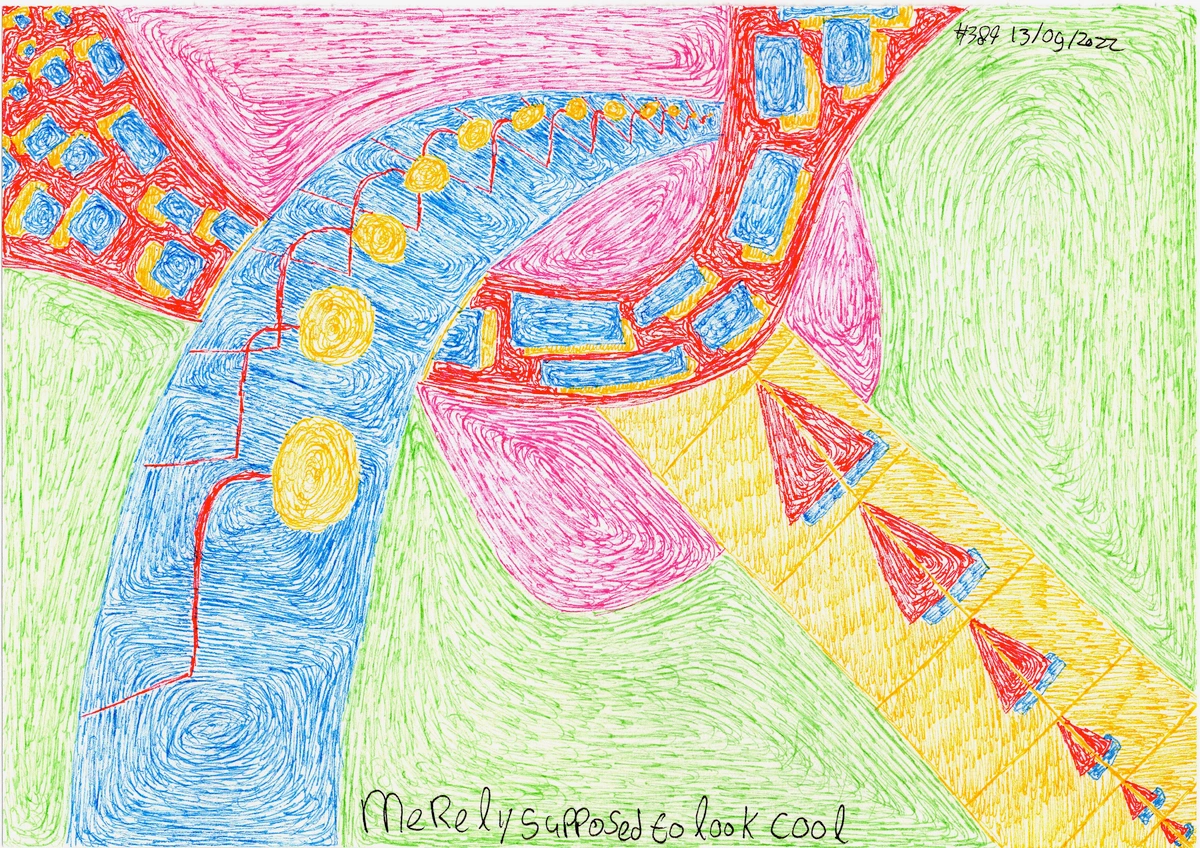
The Ancient Whispers: When Walls First Spoke
It’s mind-boggling, isn't it? Our ancestors, way back when, weren't content with just existing. They had stories to tell, beliefs to share, and they chose the biggest, most prominent canvases around: cave walls. I mean, imagine stepping into a cavern, the air cool and damp, and seeing the flickering light of a torch illuminate a vibrant, galloping bison on a rock face. It’s a moment that transcends time, a direct connection to a primal human urge to create. This urge wasn't confined to Europe; think of the incredible rock art in Australia, some dating back tens of thousands of years, or the early cave paintings found in Africa, depicting daily life and rituals. These global examples remind us that wall art is truly a universal language.
Early artists used natural pigments like ochre, charcoal, and minerals, often mixed with binders such as animal fat, blood, or plant sap, applied with fingers, chewed sticks, or even rudimentary brushes fashioned from hair or plant fibers. These weren't just decorative; they were records, rituals, perhaps even shamanic visions, crucial lessons for survival, mapping hunting grounds, marking tribal territories, or simply an early form of storytelling and artistic expression. A mural, at its core, is art integrated into an architectural surface. And these early cave paintings? Absolutely murals. They were permanent, site-specific, and had a profound cultural purpose. A mural depicting a successful hunt within a cave inhabited by a specific tribe, for instance, spoke directly to that community's survival and spiritual beliefs. Its meaning was inseparable from its immediate surroundings.
Fast forward a bit, and we see Egyptian tombs adorned with intricate paintings, depicting daily life, religious ceremonies, and the journey to the afterlife. Beyond just accompanying the deceased, these paintings were believed to secure divine favor, ensure the deceased's eternal well-being, and maintain cosmic order through their detailed depictions. Think about the sheer dedication involved: grinding minerals like lapis lazuli for blue and malachite for green, mixing them with binders like animal glue or egg tempera to paint those intricate narratives onto plaster or limestone surfaces, sometimes even papyrus layers on walls. These weren't portable scrolls; they were part of the very structure, designed to accompany the deceased into eternity. It really makes you think about the permanence artists seek, doesn't it? Even now, when I create my abstract pieces, I often wonder about their longevity, their future home. It's a different scale, sure, but the desire to leave a mark... it's universal.
From Sacred to State: Murals Through the Ages
From these profound, often spiritual beginnings, the story of murals only grew, taking on new forms and grander ambitions in the civilizations that followed.
Classical & Renaissance Grandeur
Before the full flowering of Renaissance frescoes, it's worth a quick nod to the Byzantine mosaics, particularly those adorning churches. While not painted, these shimmering artworks, crafted from countless small, colored tesserae (individual pieces of stone, glass, or ceramic), were integrated directly into architectural surfaces like domes and walls. They were monumental, site-specific, and served powerful religious and political narratives, their radiant surfaces catching and reflecting light to create an otherworldly, spiritual atmosphere. These mosaics truly laid groundwork for grand, integrated art forms.
And speaking of shimmering beauty, we can't forget the incredibly rich tradition of wall art in Islamic cultures. While often non-figural, their mosques and palaces are adorned with breathtaking geometric patterns, intricate arabesques, and elegant calligraphy, all integrated directly into the architectural surfaces. It's a different kind of storytelling, focusing on mathematical precision, spiritual contemplation, and the beauty of language, but it's just as monumental and site-specific as any fresco, reminding us of the diverse ways humans have approached integrated art.
Then came the classical world, where frescoes became all the rage. Imagine painting directly onto wet plaster – a technique known as buon fresco, where the pigments chemically bond with the drying plaster, creating an incredibly durable and vibrant artwork. Every stroke had to be decisive before the plaster dried. It's a genuine race against time, exhilarating and terrifying, a bit like my process sometimes, embracing the unpredictable chaos of a fresh canvas; though, thankfully, my canvases don't demand quite the same speed and precision as a vast ceiling! The Romans and Greeks mastered this, but it was during the Renaissance that it truly exploded. Think Michelangelo's Sistine Chapel – an absolute masterpiece, not just of painting, but of monumental storytelling, covering over 12,000 square feet. Honestly, the sheer audacity of undertaking a work of that scale makes my own artistic ambitions feel... well, perhaps a little more grounded. These weren't just decorative; they were grand narratives, teaching tools, awe-inspiring displays of faith and power, and often served as powerful propaganda for the Church and wealthy patrons, solidifying their legacy and influence. Throughout these eras, from ancient emperors to Renaissance popes and revolutionary governments, the patron played a critical role, often dictating subject matter and providing the resources necessary for such ambitious undertakings.
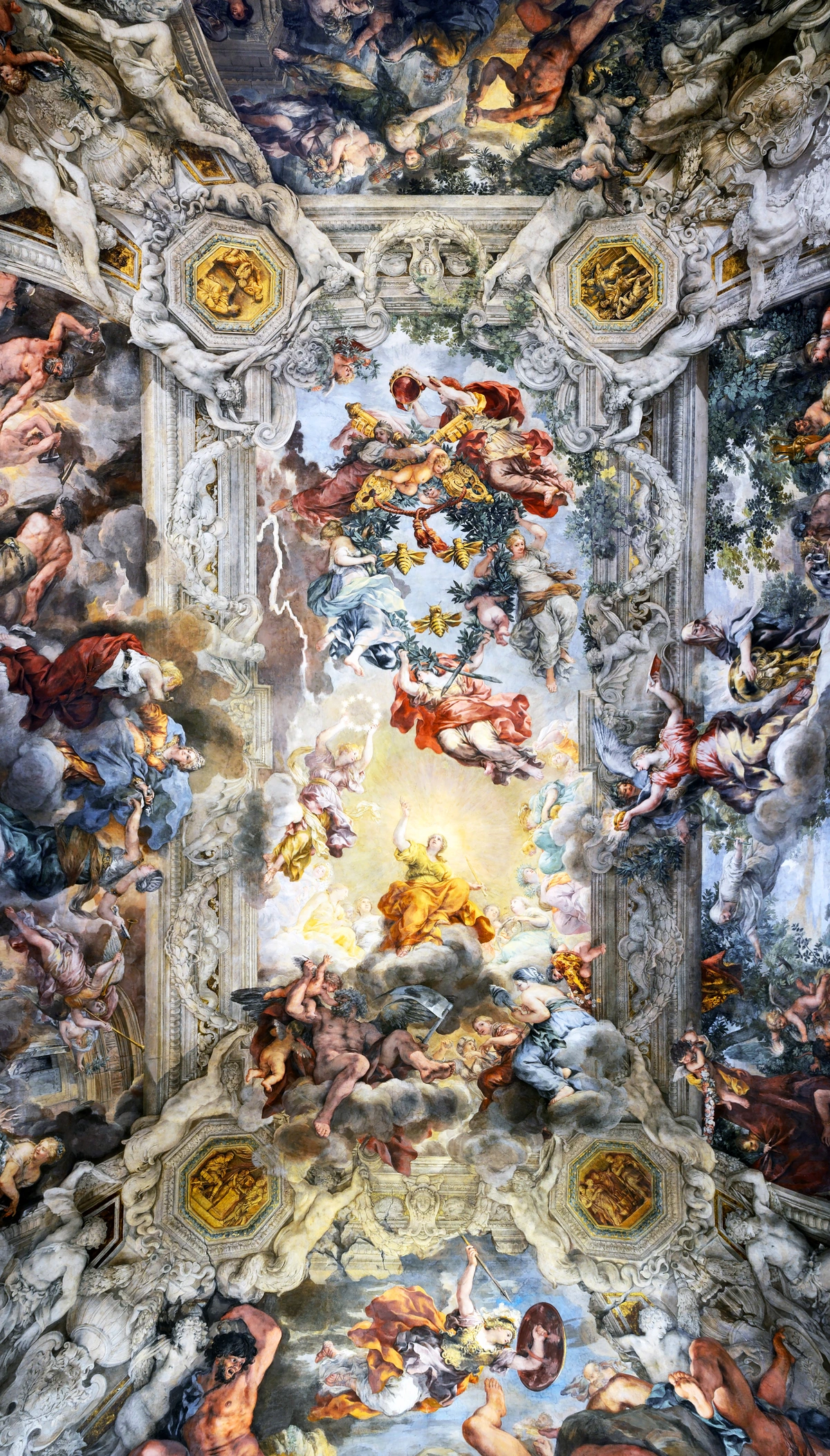
Art for the People: The Age of Revolution
The tradition continued, evolving through different artistic movements, often confined to churches, palaces, and public buildings. As the art world transitioned, the role of murals shifted, particularly in Europe. While the Renaissance saw their peak, the rise of the Protestant Reformation in some regions led to a decline in religious mural commissions, as reformers often prioritized simpler aesthetics and discouraged elaborate iconography, pushing mural art into new secular contexts, though the grand tradition endured in Catholic areas. But the real game-changer, in terms of social impact and a shift towards art for the broader public, arrived in the early 20th century.
I'm talking about the Mexican Muralist movement. Born out of the post-revolutionary fervor in Mexico, coupled with deep-seated desires for national cultural identity and social reform—especially concerning land rights, indigenous recognition, and celebrating their rich pre-Hispanic heritage—artists like Diego Rivera, José Clemente Orozco, and David Alfaro Siqueiros turned public walls into vibrant canvases for social and political commentary. The Mexican Revolution, a decade-long conflict, had reshaped the nation, giving rise to a powerful cultural renaissance. These artists, many having studied in Europe, brought back influences from avant-garde movements like Cubism's fragmented forms and Symbolism's evocative imagery, fusing them with their own powerful cultural narratives. They were commissioned by the government to tell the story of their nation, its struggles, its heroes, and its future. Executing these monumental works on vast public buildings, often with limited resources, presented significant logistical and artistic challenges, yet their dedication created enduring masterpieces. It was art for the people, by the people, and in public spaces where everyone could see it – a truly radical idea for its time, democratizing art in a way that resonated deeply with communities and serving as a powerful catalyst for social change. And soon enough, art for the people would spill out onto the streets in even more unexpected ways, moving beyond official commissions to claim urban spaces for expression.
The Rise of Street Art and Contemporary Murals: Urban Canvases
And then, as art often does, it spilled out onto the streets, quite literally. Sometimes I think art just gets restless, you know? It yearns for broader audiences, for the gritty honesty of concrete. Before street art blossomed into complex murals, its roots lay in rudimentary graffiti tags – often illicit markings that served as territorial claims, personal signatures, or, crucially, as a vibrant, defiant expression of youth subculture and protest against societal norms and urban decay. This raw, immediate form of expression gradually evolved, pushing artistic boundaries and demonstrating the power of public walls as canvases.
From Tags to Complex Narratives: The Evolution of Street Art
This journey from simple tagging to highly complex visual narratives was propelled by developing techniques like the mastery of aerosol spray paints for intricate detail and speed, and the widespread use of stencils for reproducibility. Before spray paint became king, many early street artists also employed traditional brushes, rollers, and even found objects to apply their messages, experimenting with whatever was at hand to make their mark. We saw the emergence of more elaborate 'pieces' (complex graffiti artworks) and 'wildstyle' (an intricate, often deliberately illegible, highly stylized form of lettering unique to graffiti artists, pushing the abstract boundaries of text itself) that pushed the aesthetic boundaries of graffiti. The mid-to-late 20th century saw the emergence of street art, which, in its more ambitious forms, often blur the lines with traditional muralism. It’s truly fascinating to witness the transformation from rudimentary graffiti tags to the highly complex, often narrative street art we see today.
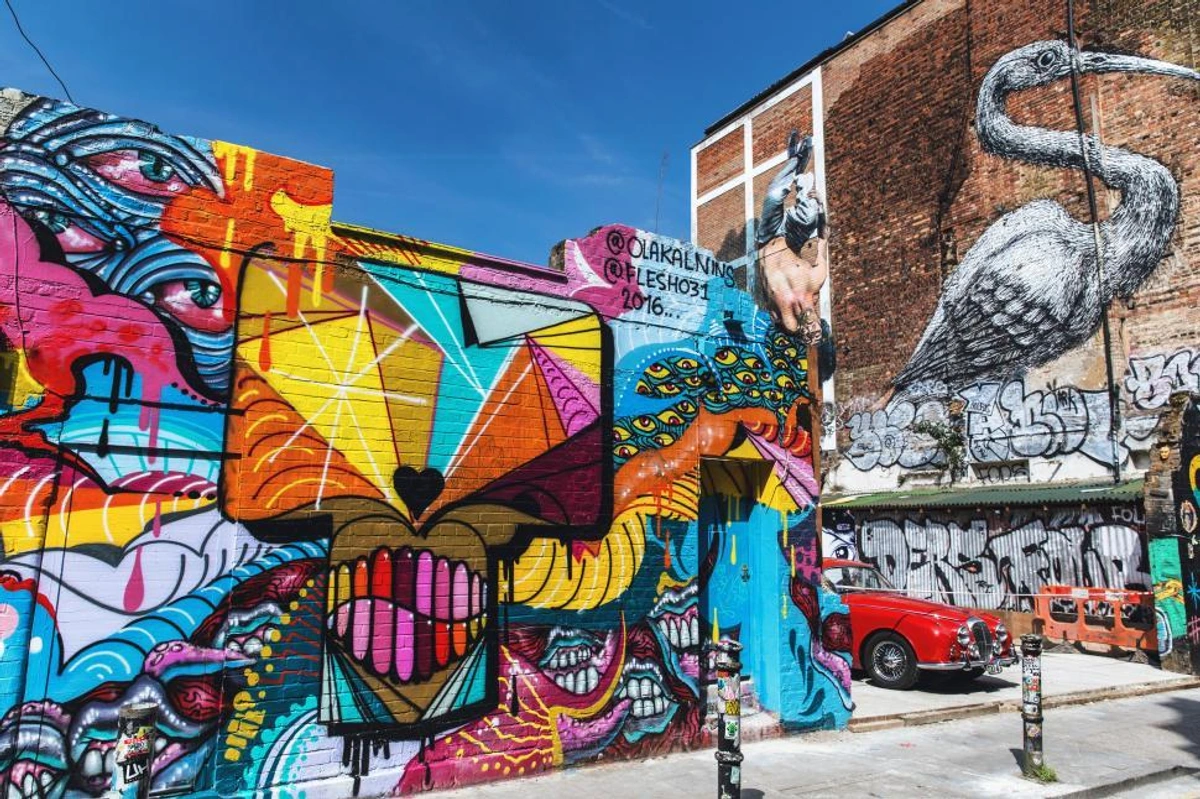
It’s worth noting that alongside the organic rise of street art, public art programs and urban planning initiatives also began to play a significant role. These programs, often municipal or governmental, started to legitimize and integrate murals into cityscapes, acting as a crucial bridge between illicit street expression and commissioned public works. The rise of 'legal walls' and street art festivals really acted as a bridge, allowing artists to experiment on a grand scale and fostering public acceptance. Figures like Keith Haring, with his iconic bold lines and vibrant public works, transformed urban landscapes. He brought his unique style directly to the people, often in places they least expected it.
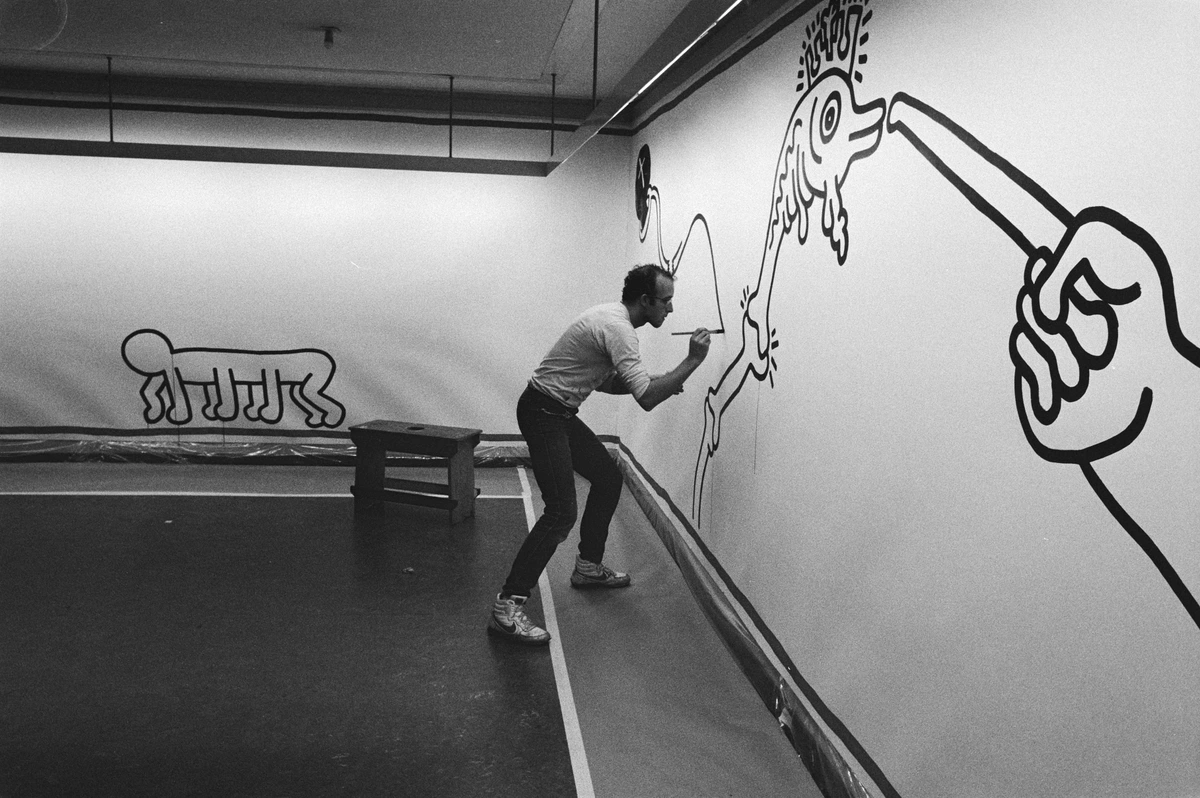
Contemporary Murals: Expanding the Canvas
And who could talk about modern murals without mentioning Banksy? His works, often satirical and politically charged, appear overnight, transforming mundane walls into potent visual commentaries. Whether it's his recent powerful works in Ukraine, addressing conflict and resilience, Banksy uses the mural format to spark dialogue and challenge perceptions. It's a powerful evolution of the mural's social impact, often operating outside traditional art institutions. For me, his anonymous approach and sheer nerve are a constant reminder that art can truly disrupt.
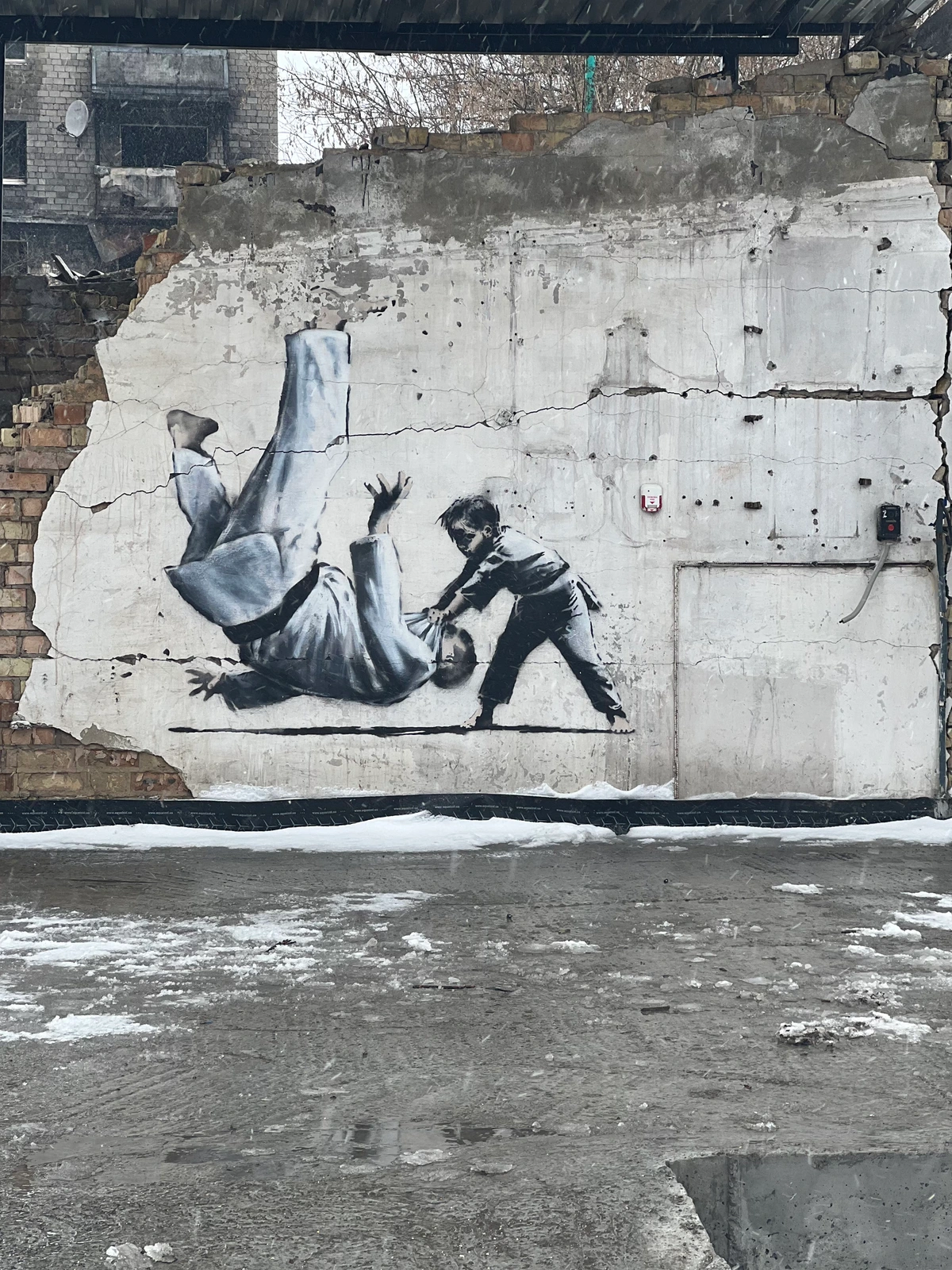
Contemporary murals also embrace a wider array of techniques beyond traditional paint and brush. Artists now commonly use a diverse palette of techniques, each chosen for its unique properties and how it interacts with the specific architectural surface:
- Aerosol spray paints: Essential for intricate street art, allowing for fine detail and quick application.
- Stencils: Favored for reproducibility and creating sharp, graphic imagery.
- Wheatpasting: Allows for pre-prepared artworks (like large posters or prints) to be installed quickly and efficiently.
- Tile mosaics: Offering durability and a shimmering, textural quality, reminiscent of ancient traditions, often chosen for longevity in harsh climates.
- Digital printing: Used for large-scale reproductions or precise imagery, often applied to panels or directly onto surfaces, allowing for complex photographic details.
- Digital projection mapping: Creating dynamic, temporary murals using light and digital animation, especially effective for temporary installations or interactive displays.
These techniques are often applied to diverse surfaces like rough brick, smooth concrete, textured stucco, reflective corrugated metal, and even repurposed wood panels. Each surface presents its own challenges and opportunities, influencing the choice of material and technique to ensure durability and visual impact. For instance, mosaics are favored for their incredible longevity and resistance to weather, while wheatpasting allows for rapid, temporary installations that can respond quickly to current events. This results in truly ambitious scales, dwarfing the more intimate pieces found in galleries. It reminds me how important it is for art to evolve, to find new platforms and new voices, much like how understanding abstraction in contemporary art requires us to look beyond conventional boundaries.
Looking forward, the canvas itself is expanding beyond the physical. We're now seeing incredible digital projection mapping, creating temporary, dynamic murals of light, and even augmented reality (AR) experiences that transform static murals into interactive narratives through a smartphone. It's truly pushing the boundaries of what a wall can 'say'.
Another beautiful example of a contemporary mural is Njideka Akunyili Crosby's "The New On-Site" on Manhattan's High Line, which beautifully combines painted figures with collage elements, creating a rich tapestry that speaks to identity and everyday life. This type of mixed-media approach truly showcases the breadth of modern muralism, moving beyond pure paint. Public art commissions and urban planning initiatives also play a significant role today, fostering the creation of large-scale, often collaborative, mural projects that are integrated into cityscapes, not just as decoration but as integral parts of urban revitalization strategies. It's a prime example of how murals foster connections within communities and with public spaces.
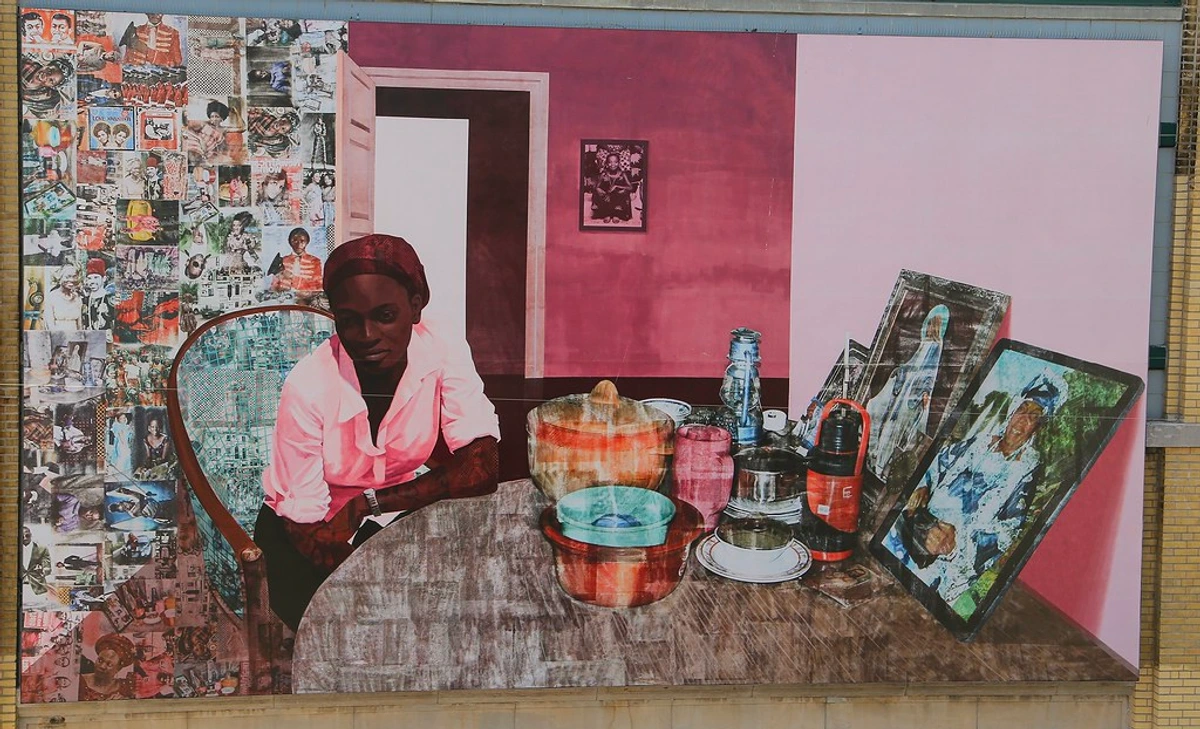
The Enduring Impact: More Than Just Paint on a Wall
So, why do murals continue to captivate us, spanning millennia and cultures? I think it boils down to a few key things, each as powerful as the last:
- Accessibility: Murals are inherently democratic. They're public. No ticket required, no hushed galleries. They're part of our daily lives, transforming urban blight into vibrant cultural landscapes. They democratize art, making it available to everyone, regardless of background or financial means. It's art for the people, always. This commitment to public access and engagement is something I deeply admire, and it often informs my own desire to create pieces that speak to a broad audience.
- Community, Identity, and Economic Revitalization: Murals often reflect the soul of a community, fostering a strong sense of urban identity. They can celebrate local heroes, depict shared histories, or voice collective aspirations and struggles. This "placemaking" aspect, where art helps define and imbue a location with unique character, is truly powerful. For example, imagine a mural in a historically diverse neighborhood that weaves together symbols and portraits from its various cultural groups, creating a visual narrative that celebrates their interconnectedness and history. This process transforms a generic wall into a powerful emblem of shared identity. Beyond identity, murals can also attract tourism, beautify neglected areas, and stimulate local businesses. A study in Philadelphia, for example, noted that murals significantly increased foot traffic and fostered local pride, contributing significantly to a neighborhood's economic vitality. My visit to our museum in 's-Hertogenbosch always reminds me of how art can become a focal point for civic pride and engagement. However, it's important to acknowledge that this revitalization isn't always straightforward. Sometimes, murals can be accused of 'artwashing' – unintentionally (or intentionally) making neighborhoods more attractive to gentrification, which can displace long-term residents. It forces us to ask tough questions about who truly benefits from urban beautification.
- Narrative Power: Like their ancient counterparts, modern murals tell stories. They can be historical, political, abstract, or purely aesthetic. They provoke thought, spark conversations, and sometimes, even inspire action. They also serve as powerful historical documentation or memorials, ensuring that significant events or individuals are remembered and honored in the public sphere, essentially acting as visual archives of collective memory. Beyond that, many murals today are explicitly designed as tools for education and awareness-raising, tackling critical social issues like climate change, mental health, or social justice. They’re a living testament to collective memory and a platform for dialogue.
- Transformation: A dull, grey wall becomes a vibrant artwork. A neglected alleyway turns into an open-air gallery. Murals have this incredible ability to transform spaces, adding beauty, color, and life where there once was none. It's a bit like how a truly captivating abstract art piece can completely redefine a room, isn't it? I remember stumbling upon a colossal, almost overwhelmingly joyful mural on a drab industrial building once, and it just… changed my whole afternoon. A true moment of unexpected magic.
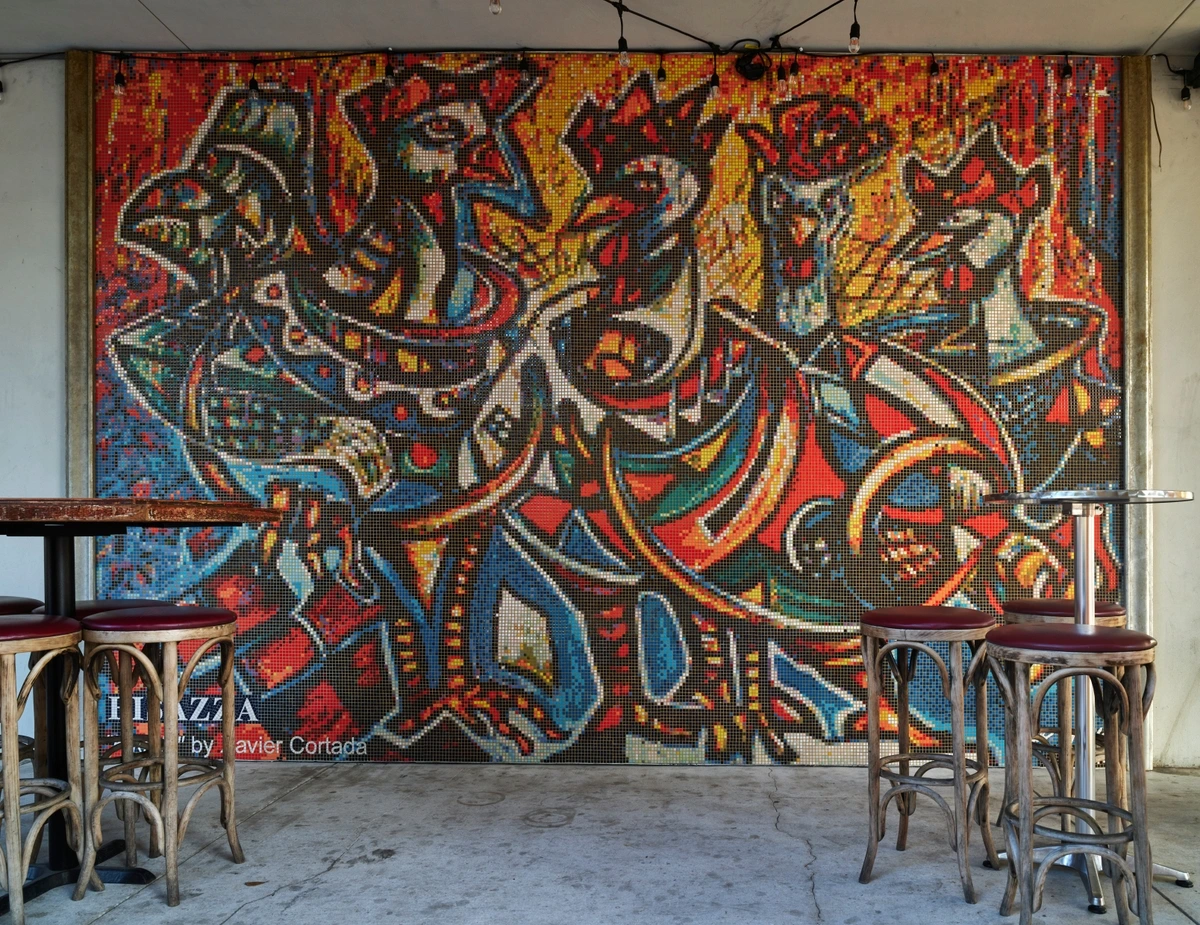
- Psychological Impact: There's something undeniably uplifting about encountering a grand, vibrant mural unexpectedly. They can evoke awe, wonder, and a sense of inspiration, injecting moments of beauty and thought into our busy routines. They can also foster a shared emotional experience, reminding us that art is for everyone, always. Studies, or even just casual observation, suggest that exposure to public art can genuinely improve mood and reduce stress in urban environments – a much-needed splash of mental sunshine. Plus, a well-placed mural can serve as an informal landmark or wayfinding tool, helping people orient themselves and navigate complex urban environments, contributing to a sense of place.
- Community Engagement & Collaboration: Many contemporary murals are born from a collaborative process, involving local residents, community groups, and the artists themselves. This participatory approach ensures the artwork truly reflects the community's voice and creates a deeper sense of ownership and connection. It's not just art for a community, but art by a community, fostering dialogues and shared experiences from conception to completion. This hands-on, shared creation is something I find incredibly powerful.
- Ephemerality, Preservation, and Ethics: Especially with street art and many contemporary murals, there's often an understanding that they might be temporary. This fleeting nature can add another layer of meaning, encouraging viewers to appreciate the art in the present moment and ponder the transient nature of both art and urban spaces. However, this also presents significant challenges for preservation and restoration, requiring dedicated efforts to document and conserve these often-exposed artworks for future generations, especially through digital archiving and photography. The sheer cost of specialized cleaning, restoration of damaged areas, and protective coatings is often a major hurdle, requiring significant expertise and resources. This is compounded by the difficulty in obtaining permissions for restoration from property owners or local authorities, the frequent lack of consistent funding for ongoing maintenance programs, and the increasing challenge of finding skilled conservators trained in the unique requirements of large-scale outdoor public art. For ephemeral street art, documentation through high-quality photography and digital archiving becomes crucial, capturing its essence before it disappears. It’s a constant battle to keep these public artworks alive, almost like trying to preserve a fleeting moment in time, but the effort is always worth it. On a more complex note, the growth of murals also raises critical ethical questions.
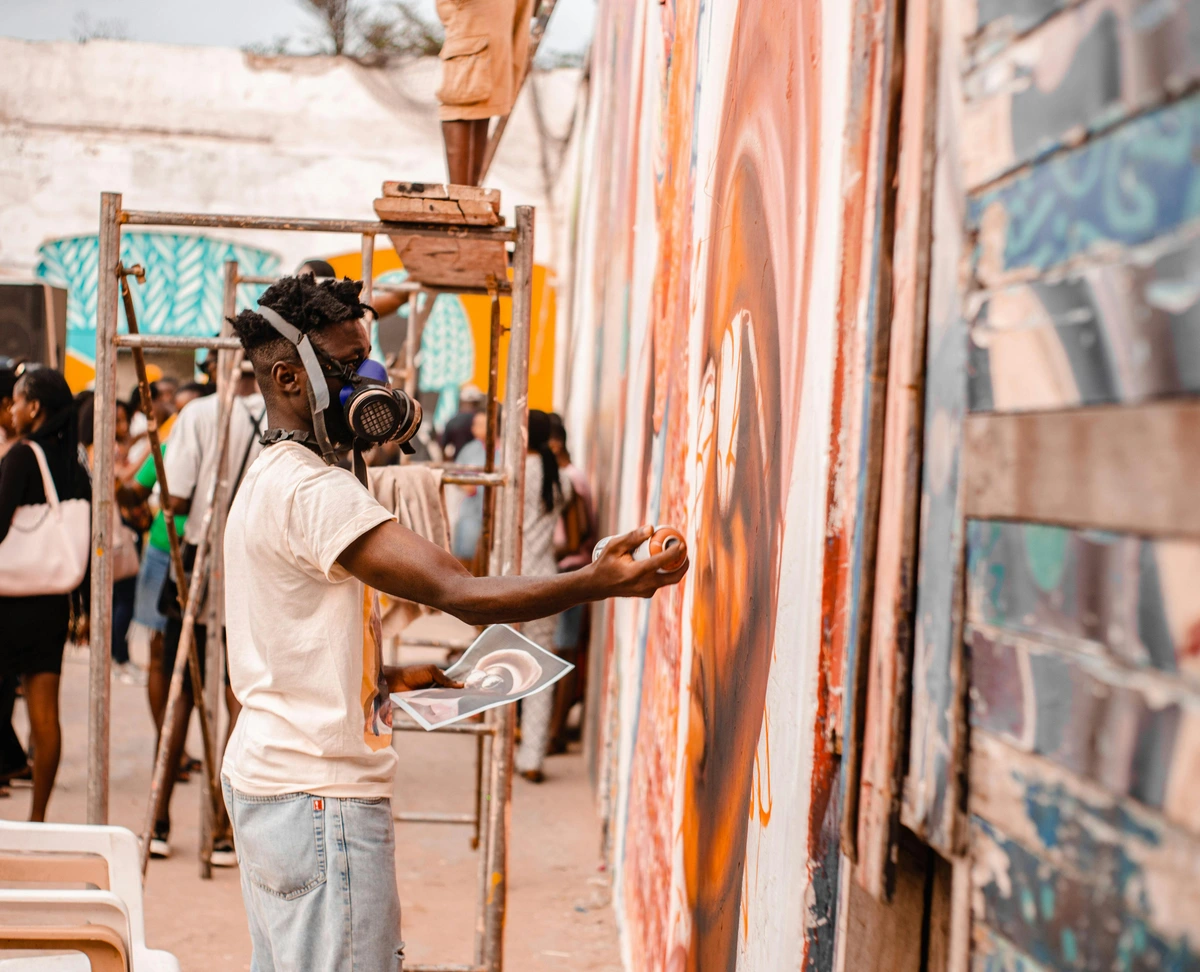
Frequently Asked Questions About Murals
Having journeyed through history and impact, it’s natural to have some questions linger. Here are a few I hear often:
What is the primary difference between a mural and graffiti?
Ah, the classic question! Simply put, the main distinction usually lies in intent, scale, and legality, but also in focus: graffiti often emphasizes the word, tag, or stylized lettering of an artist, while murals typically prioritize the image or narrative, aiming for broader legibility and public appeal. Murals are generally large-scale, planned artworks, often commissioned or created with permission, with a clear artistic or community purpose. Graffiti, while sometimes incredibly artistic and sometimes evolving into complex street art pieces, often originated as unsanctioned tagging or writing. However, the lines between these forms are increasingly blurred, with the emergence of "permissioned graffiti" or "street art murals" where artists, known for their street art style, are commissioned to create large-scale works. These blur the traditional definition, embracing public spaces with legal backing while retaining the raw energy of street art. It's a vibrant grey area, sometimes with permission, sometimes without, and often embracing the ephemeral nature of their work.
What are some common techniques and materials used in mural painting?
It's quite a spectrum! Historically, fresco (painting on wet plaster) was paramount. Today, artists utilize a vast array of materials and methods, from durable acrylic and latex paints designed for exterior use, to aerosol spray paint (essential for intricate street art). Beyond traditional painting, mosaic murals, tile murals, digital printing directly onto surfaces or panels, digital art projections, and wheatpasting are common. The technique often depends on the specific surface (brick, concrete, stucco, wood, corrugated metal, glass), the desired effect, and environmental factors. Many artists consider material durability and longevity a key factor for these often-exposed artworks; for instance, acrylic and latex paints are favored for their weather resistance and vibrant color retention outdoors, while mosaics offer unparalleled durability against the elements.
How do murals contribute to urban development?
Significantly! Murals can deter vandalism, beautify neglected areas, attract tourism, and foster community pride. By transforming neglected walls into vibrant artworks, they subtly communicate that a space is cared for and valued, often acting as a deterrent to further illicit tagging or decay. They can act as landmarks, open-air museums, and platforms for local storytelling, making cities more vibrant and engaging places to live and visit. This process, often called "placemaking," directly contributes to creating unique neighborhood identities and a stronger sense of local character. Murals can also stimulate economic growth by drawing visitors and encouraging local businesses, while promoting a sense of shared identity and collective memory, turning forgotten spaces into public treasures.
What are the ethical considerations when creating or commissioning a mural?
This is a crucial question for contemporary public art. Ethical concerns often revolve around gentrification, where murals can inadvertently make neighborhoods more desirable, leading to increased property values and the displacement of long-term residents. There's also the risk of appropriation of cultural symbols, which can manifest as the insensitive use of traditional motifs or images from one culture by an artist from another, especially without proper understanding, consultation, or permission, leading to a loss of meaning or even offense. Finally, the potential for murals to be co-opted for commercial purposes can dilute their artistic or community message, turning public art into an advertisement. Addressing these issues requires thoughtful community engagement, respectful collaboration, and clear intentions.
What are the challenges in maintaining and preserving murals?
It's a tough job! Murals, especially outdoor ones, face constant threats from environmental factors like sunlight, rain, pollution, and temperature fluctuations, which can cause fading, cracking, or material degradation. Vandalism, urban development, and lack of funding for conservation are also major concerns. The cost of specialized cleaning, restoration of damaged areas, and protective coatings, all of which require significant expertise and resources, is a substantial challenge. Add to that the difficulty in obtaining permissions for restoration from property owners or local authorities, the frequent lack of consistent funding for ongoing maintenance programs, and the increasing challenge of finding skilled conservators trained in the unique requirements of large-scale outdoor public art, and you've got a constant battle to keep these public artworks alive. For ephemeral street art, documentation through high-quality photography and digital archiving becomes crucial, capturing its essence before it disappears. It’s a constant battle to keep these public artworks alive, almost like trying to preserve a fleeting moment in time, but the effort is always worth it.
A Final Thought on These Painted Giants
Ultimately, murals are a testament to our collective human desire to communicate, to beautify, and to leave our mark. They are democratic art forms, accessible to all, and they remind us that art isn't confined to galleries; it's all around us, if we just take a moment to look up, to really see the stories etched onto our shared spaces. I remember walking through Lisbon once and stumbling upon a towering, intensely colourful mural on a building that just screamed history and resilience – it wasn't just paint, it was the soul of the city rendered visible. This experience, the way art could so powerfully embed itself within the urban fabric, deeply influenced how I approach my own abstract pieces. It constantly pushes me to consider how my work, even on a canvas, can resonate with a wider audience and transform perceptions, embodying that same bold, uninhibited spirit. Murals are a conversation starter, a history lesson, and sometimes, just a much-needed splash of joy on a mundane day. So next time you're out, take a moment to really see the walls around you. What stories are they telling? What unexpected beauty might you discover, reminding you that art truly is for everyone, always? Perhaps you'll find inspiration to explore art in your own life, or even discover a piece that speaks to you in my own collection here.




